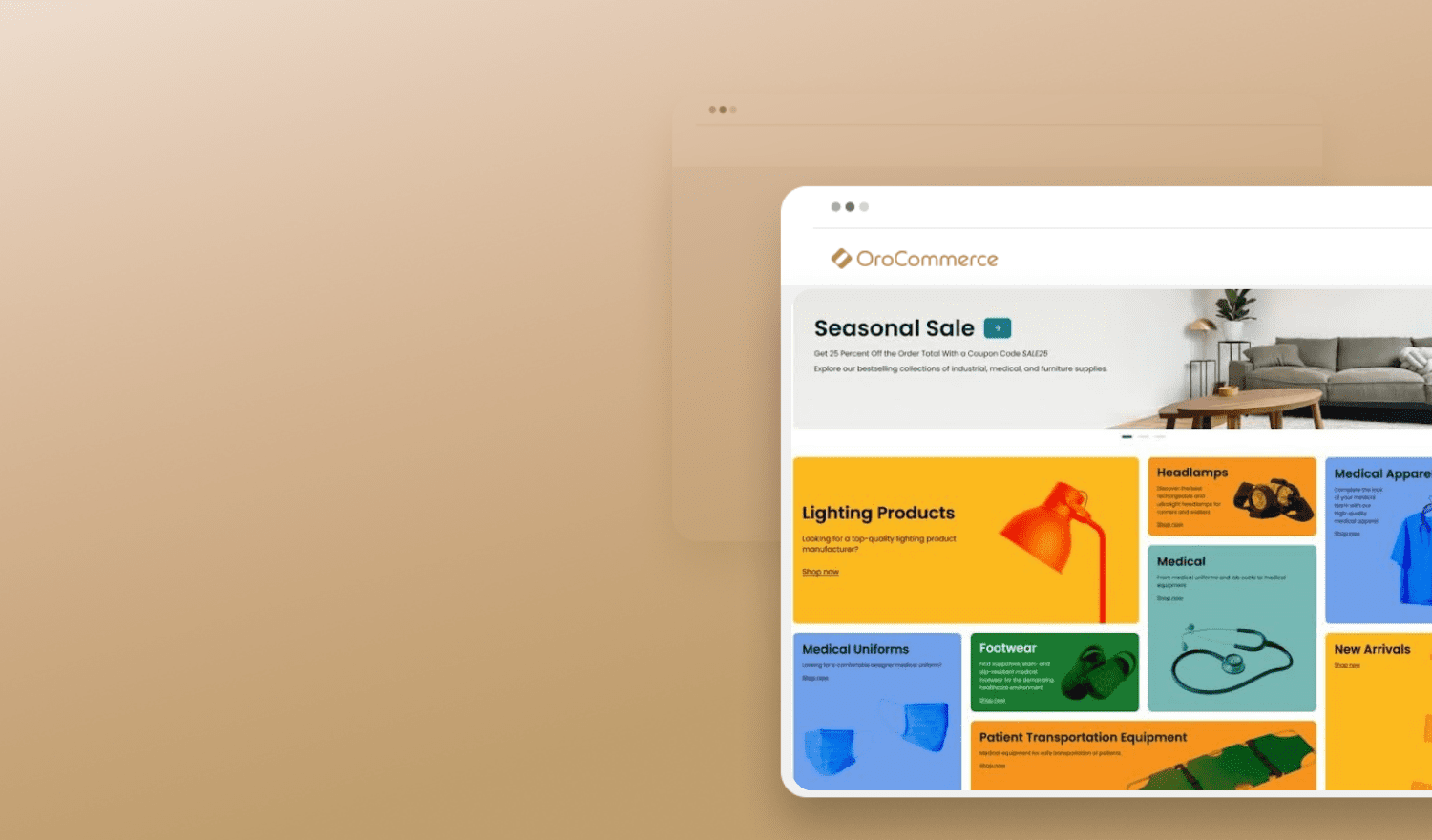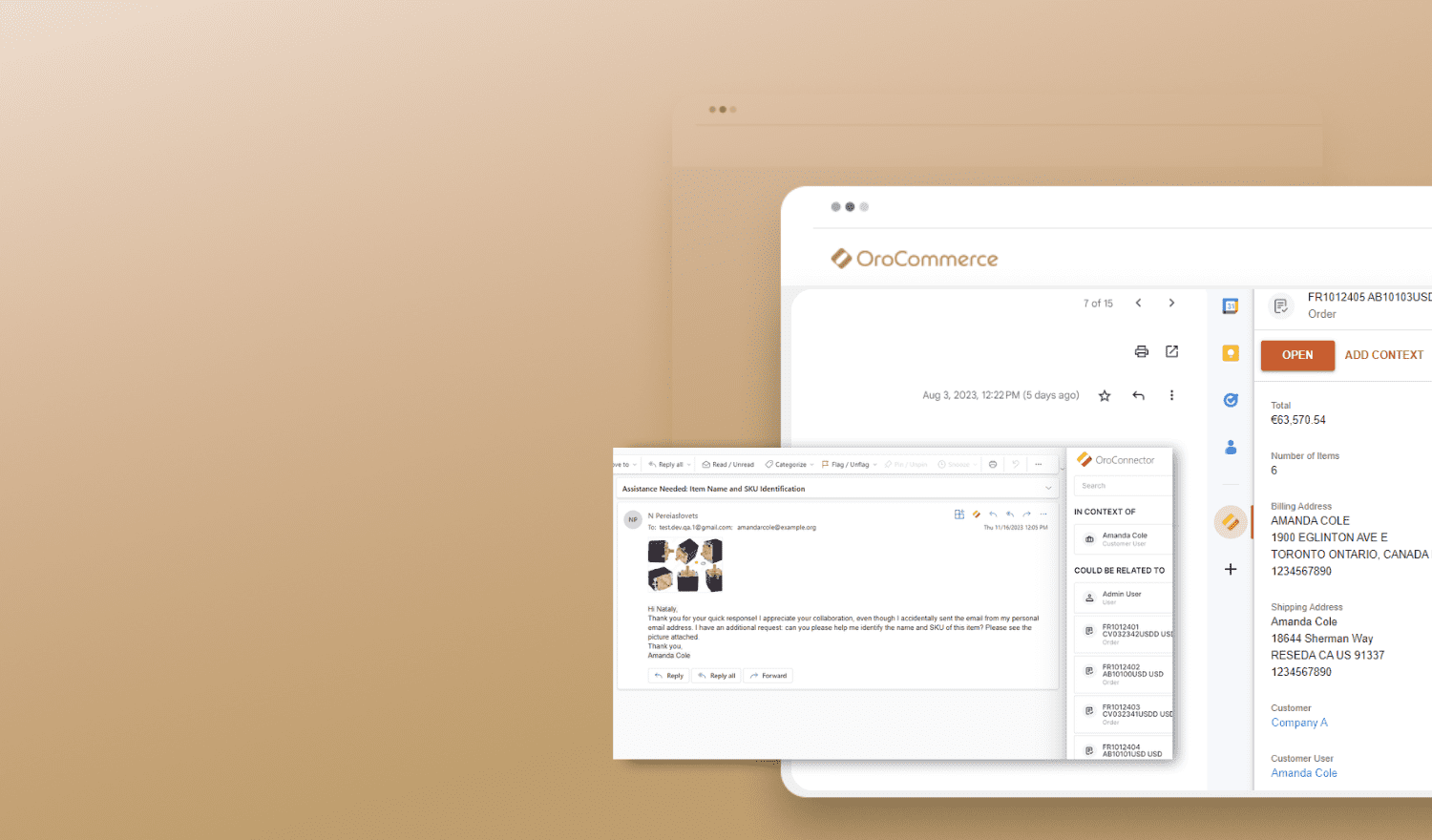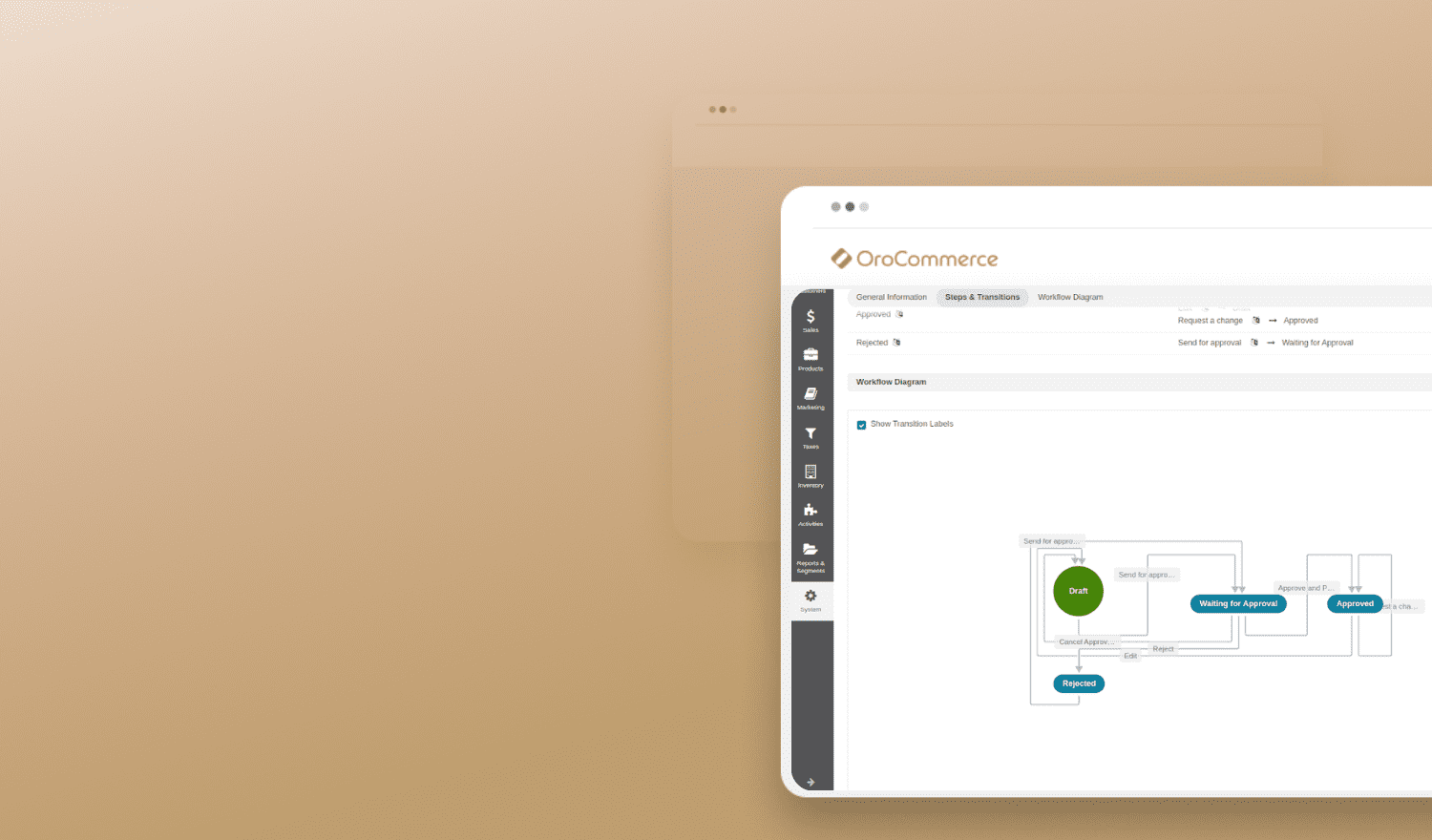It’s been a bit more than two months since our official launch of OroCommerce 1.0, and we’re very excited to see significant growth in both our Enterprise customer base and active product installs. However, success has never made us lose momentum in improving the product.
Therefore, we are proud announce the release of OroCommerce 1.1 CE and EE versions immediately available to our community.
As we aim to provide the best eCommerce platform for B2B companies, the 1.1 release has significantly improved the product experience for both front- and back-end users.
Main capabilities we’ve upgraded in OroCommerce 1.1:
- Workflows and roles
- Integrations and APIs
- Management console
- Segmentation and reporting
- Store frontend
- System performance
Let’s briefly overview each of these in more detail.
Workflows and Roles
- New default RFQ and Quote workflows have been added to ensure a consistent and seamless request for quotes and quotes management experience for both the store front-end and back-end: e.g. users in both the front- and back-end can trace the processing steps or status of a particular RFQ or Quote and negotiate on details (in the case of RFQs).
- Create and edit entity pages can be re-used as existing CRUD forms of entities in workflows to save time and effort.
- A transition destination page can be selected in the workflow editor.
- An order confirmation page has become a part of the checkout workflow. By enabling a different checkout workflow, it’s possible to control and modify the final step of the checkout.
- Additional validation rules have been added for checkout workflows. For example, this allows the system to warn users or request more data before the checkout workflow starts.
- The UI for different sets of configurable customer role permissions set for both the store front- and back-end has been improved.
Integrations and APIs
- Payment and shipping methods (e.g. UPS, PayPal) can be now managed and configured by a back-end user similar to other integrations.
- Enhanced multiple alternative configurations can be used in the payment and shipping rules.
- A detailed payment history has been added to the order view pages in the management console.
- API credentials and other configuration parameters of shipping integrations can be validated before they get enabled.
- Customers and customer users can be exported for further use in external systems like a CRM. (Not relevant if you use OroCRM since customer data syncs are seamless and automated)
- New customer data API and RFQ API ensure an easier integration into third-party systems.
Management Console
- Improved (SEO-friendly) web content management enables efficient redirection control, URL generation and configuration, automatic URL conflict resolution.
- New Web-content management UI helps easily customize the menus structure and front-end layout for specific websites or the general system.
- Product page templates for individual products can be selected from the set of available front-end themes. This can be used for unique individual product pages.
- Selected product categories can be moved to any menu page (including simultaneous bulk moves of multiple product categories).
- Warehouse and price list priorities can now be easily updated with a drag-and-drop UI.
- Warehouses can now be removed.
- Language management UI has been modified to map system-defined languages to the CrowdIn translations available. They can also be easily installed with just one click from the Languages view.
Segmentation and Reporting
- A number of records displayed in a segment can now be defined and limited (e.g. to show top-5 revenue-generating purchase orders).
- Segmented data can now be sorted (e.g. ascending or descending order).
- Report results can be grouped by custom date periods (e.g. by week, by month, by quarter).
Store Front-end
- ‘My account’ profile has been optimized for the mobile and tablet devices.
- Category pages can now contain large product images (from 400×400 pixels)
- Front-end grids can be configured the same way the grid is configured in the back-end management console (e.g. it’s possible to enable or disable certain fields and display or hide filters).
- Mass ordering of product variants can be performed via a matrix ordering form.
- Orders and grouping of product attributes can be controlled by the store managers on store front-end pages.
- Web catalog data has been included in the search index expanding the searchable content.
- Regular “contains” filters in the search-based datagrids have been implemented further enhancing the search functionality (e.g. it’s possible to search for an item only using a fragment of a keyword).
System Performance
- Existing event listeners have been refactored to target entity-specific events.
- Demo data installation process has been modified to populate all data indices once the system has been installed (additional re-indexing is no longer required).
- Search data indexation has been refactored to limit the scope and make sure it’s triggered only for the relevant data field updates.
- ORM reindexation speed has been improved.
- Entity line item hydration has been optimized for the entities with a large number of the line items.
- Localized data has been cached to improve the data retrieval performance.
Due to major functional and performance improvements in OroCommerce 1.1 both front-end and back-office product users, including solution integrators, can leverage the optimizations made in version 1.1 for more productivity across levels.
To upgrade OroCommerce to the latest version, please follow the steps provided in the OroCRM upgrade and clone instructions as the upgrade process is similar (make sure to use the orocommerce.git repository or files from http://stage.dev.oroinc.com/b2b-ecommerce/download page).
Stay tuned for future upgrades and feature teasers included in the next version of OroCommerce. We’ve got a lot of exciting enhancements planned, including tax management features, more shipping and payment integrations, promotions and coupons functionality, and more.
As always, we’re looking forward to your feedback and suggestions, as it helps us further improve our products.



